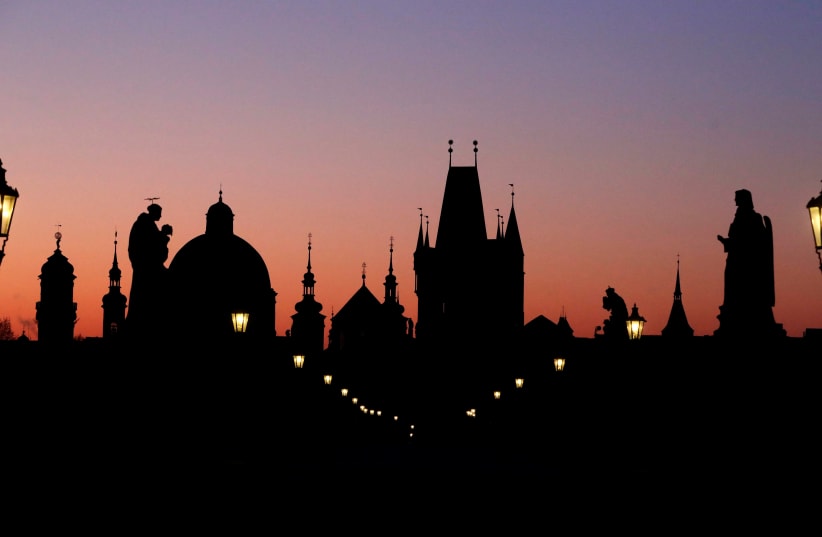Dozens of paving stones cut from Jewish headstones were unearthed during redevelopment work in Prague’s tourist district.
The discovery, confirming Jewish community suspicions that communist authorities in the 1980s used Jewish grave markers for building materials, came Tuesday in Wenceslas Square, an iconic pedestrian public square and the site of demonstrations, celebrations and other public gatherings. Today it is lined by hotels, offices, retail stores, currency exchange booths and fast-food joints.
It was first reported in English by The Guardian.
Rabbi Chaim Koci, a senior official with the Prague rabbinate, saw workers digging up cobblestones whose undersides were covered with Hebrew letters, Stars of David and dates, The Guardian reported. Other stones were blank but had polished surfaces that indicated they had also been taken from cemeteries.
“We feel this is a victory for us because until now this was just a rumor. Maybe there were Jewish stones here, but nobody knew,” said Koci, who had been at Wenceslas Square beginning early Tuesday to witness the stones being dug up.
“It’s important because it’s a matter of truth. We are making something right for the historical record. These are stones from the graves of people who were dead for maybe 100 years and now they are lying here. It’s not nice.”
The Jewish community had asked the Prague City Council to be allowed to send a representative to witness the digging up of the cobblestones in order to confirm the persistent rumor. They appear to have been taken from several cemeteries. Dates on the stones range from 1877 to the 1970s.
